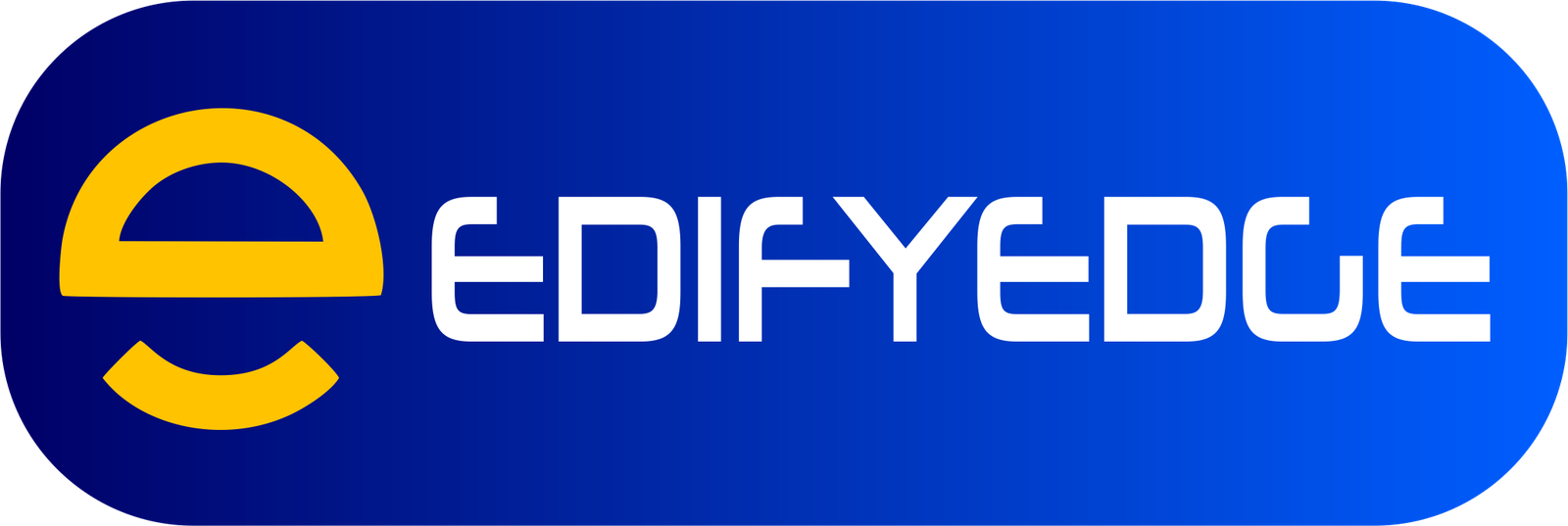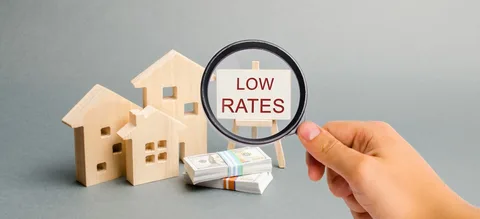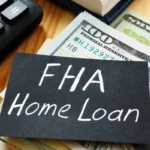What is a VA Home Loan?
A VA home loan is a mortgage loan program backed by the U.S. Department of Veterans Affairs (VA).
One of the primary benefits of a VA loan is that it does not require a down payment, which can be a significant advantage for borrowers who may not have enough savings for a traditional down payment. Additionally, VA loans do not require private mortgage insurance (PMI), which can save borrowers hundreds of dollars each month.
To be eligible for a VA loan, borrowers must meet specific service requirements set by the VA. Generally, active-duty military personnel, veterans who were honorably discharged, and certain surviving spouses may qualify for a VA loan. The VA also considers the borrower’s credit score, income, and other financial factors when determining eligibility.
VA loans offer competitive interest rates, which can make homeownership more affordable for eligible borrowers. The VA also sets limits on the amount that lenders can charge for closing costs, which can further reduce the overall cost of obtaining a mortgage.
Current VA Loan Rates and Trends
As of [current date], the average rate for a 30-year fixed VA loan is around [x.xx%]. For a 15-year fixed VA loan, rates are hovering around [x.xx%]. These rates are based on averages across multiple lenders and may vary depending on your credit profile and other factors.
VA loan rates have been [rising/falling/relatively stable] over the past [timeframe], following broader mortgage rate trends influenced by economic conditions and Federal Reserve policies. Many housing economists expect rates to [increase/decrease/remain steady] in the coming months due to [key factors driving the forecast].
It’s important to note that VA loan rates can fluctuate daily, so these figures represent a snapshot in time. To get the most accurate and up-to-date rates for your specific situation, it’s best to speak with multiple VA-approved lenders and compare their offers.
While rates are an important consideration, they shouldn’t be the sole factor in choosing a VA loan. Be sure to also compare lender fees, customer service ratings, and overall costs to find the best overall value for your home purchase or refinance.
Factors Impacting VA Loan Rates
VA loan rates are influenced by several economic factors that affect the overall mortgage market. One of the primary drivers is inflation. When inflation rises, it erodes the purchasing power of money, leading to higher interest rates to compensate lenders. The Federal Reserve closely monitors inflation and adjusts the federal funds rate, which is the interest rate banks charge each other for overnight lending. An increase in the federal funds rate typically leads to higher mortgage rates, including VA loans.
Another key factor is the condition of the bond market, particularly the demand for mortgage-backed securities (MBS). Mortgage lenders bundle and sell mortgages as MBS to investors. When demand for MBS is high, mortgage rates tend to decrease, and vice versa. Bond market conditions are influenced by factors such as economic growth, employment rates, and investor confidence.
The overall health of the economy also plays a role in VA loan rates. During periods of economic expansion and job growth, demand for mortgages typically increases, leading to higher interest rates. Conversely, during economic downturns or recessions, mortgage rates may decrease as demand for loans declines.
Additionally, the supply and demand for housing can impact VA loan rates. When housing inventory is low, and demand is high, lenders may raise interest rates to manage the volume of loan applications. Conversely, in a buyer’s market with ample housing supply, lenders may offer more competitive rates to attract borrowers.
Fixed vs Adjustable Rate VA Loans
VA borrowers can choose between fixed-rate and adjustable-rate mortgages (ARMs). Fixed-rate VA loans offer consistent monthly payments over the life of the loan, providing stability and predictability. The interest rate remains locked, unaffected by market fluctuations. This option suits borrowers who plan to stay in the home long-term or prefer payment certainty.
In contrast, adjustable-rate VA loans start with a fixed introductory rate, typically for the first 3-5 years. After this period, the interest rate adjusts periodically based on market conditions, causing your monthly payment to increase or decrease. ARMs can be advantageous if you expect to move or refinance before the fixed period ends, allowing you to initially benefit from lower rates.
However, ARMs carry more risk as rates may rise substantially after the fixed period, leading to higher monthly costs. Borrowers must carefully consider their financial situation, expected tenure in the home, and risk tolerance when deciding between fixed and adjustable VA loan rates.
VA Loan Fees and Costs
When obtaining a VA home loan, there are several fees and costs that borrowers should be aware of. These include the VA funding fee, origination fees, and closing costs.
The VA funding fee is a one-time payment that helps offset the cost of the VA loan program. This fee is a percentage of the loan amount and varies based on factors such as your military service status, down payment amount, and whether you’ve used your VA loan benefit before. For first-time VA loan users with no down payment, the funding fee is typically 2.3% of the loan amount. However, this fee can be waived for veterans with service-connected disabilities.
Origination fees are charged by the lender to cover the cost of processing and underwriting the loan. These fees can vary among lenders but typically range from 0.5% to 1% of the loan amount.
Closing costs are the various expenses associated with finalizing the loan and transferring ownership of the property. These costs can include appraisal fees, title fees, recording fees, and prepaid items such as property taxes and homeowner’s insurance premiums. Closing costs for VA loans can range from 3% to 5% of the loan amount, depending on the location and other factors.
It’s important to note that while the VA loan program allows for some fees to be rolled into the loan amount, doing so will increase your overall loan balance and the amount of interest paid over the life of the loan. Borrowers may choose to pay some or all of these fees upfront to minimize the long-term cost of the loan.
When shopping for a VA loan, be sure to compare the total costs, including the funding fee, origination fees, and closing costs, among multiple lenders to ensure you’re getting the best deal.
Getting the Best VA Loan Rate
Getting the best rate on your VA loan requires some preparation and diligence. Here are some tips to help you qualify for the lowest rates:
Improve Your Credit Score
Your credit score is one of the biggest factors that lenders consider when determining your interest rate. Higher credit scores typically result in lower rates. Before applying for a VA loan, check your credit report for any errors and work on improving your score by paying down debts and making payments on time.
Lower Your Debt-to-Income Ratio
Lenders also look at your debt-to-income ratio (DTI), which is the percentage of your monthly gross income that goes towards paying debts. A lower DTI ratio demonstrates to lenders that you can comfortably afford the mortgage payment. Aim for a DTI below 43% for the best rates.
Shop Around with Multiple Lenders
VA loan rates can vary significantly between lenders, so it’s crucial to shop around and compare rates from multiple banks, credit unions, and mortgage companies. Get quotes from at least three to five different lenders to ensure you’re getting the best deal.
Consider a Shorter Loan Term
While a 30-year fixed-rate mortgage is the most popular option, you may be able to secure a lower interest rate by opting for a shorter loan term, such as a 15-year or 20-year mortgage. The trade-off is that your monthly payments will be higher, but you’ll pay less interest over the life of the loan.
Make a Larger Down Payment
Although not required for VA loans, making a larger down payment can help you qualify for better rates. Even a small down payment of 5% or 10% can demonstrate to lenders that you’re a lower-risk borrower.
Time Your Application
Interest rates fluctuate daily, so timing your application can make a difference. Consider locking in your rate once you find a favorable one, as rates can rise quickly.
By following these tips and being diligent in your loan shopping process, you’ll increase your chances of securing the best possible VA loan rate and saving money over the life of your mortgage.
VA Loan Limits and Conforming Loan Limits
VA loan limits refer to the maximum loan amount a qualified borrower can obtain through a VA-backed mortgage. These limits vary based on the county where the property is located, reflecting the differences in housing costs across the country. The VA loan limits are updated annually to keep pace with fluctuations in home prices.
In most counties across the U.S., the 2023 VA loan limit for a single-family home is $647,200. However, in high-cost areas, the VA loan limit can be much higher, reaching up to $1,089,300 in certain counties. These higher loan limits apply to counties where the median home price is significantly above the national average.
It’s important to note that VA loan limits are different from conforming loan limits, which are set by the Federal Housing Finance Agency (FHFA) for conventional mortgages backed by Fannie Mae and Freddie Mac. The 2023 conforming loan limit for most counties is $726,200, but it can go up to $1,089,300 in high-cost areas, similar to the VA loan limits.
While VA loan limits and conforming loan limits may differ in specific counties, they generally follow a similar pattern, with higher limits in areas with higher housing costs. This allows both VA and conventional borrowers to access financing that aligns with the local real estate market conditions.
It’s essential for VA borrowers to understand the loan limits in their county, as this can impact the maximum mortgage amount they can obtain without making a down payment or obtaining additional financing. Working with a knowledgeable VA lender can help ensure that borrowers are aware of the applicable loan limits and can make informed decisions when purchasing or refinancing a home.
VA Streamline Refinance (IRRRL) Rates
The VA streamline refinance loan, also known as the Interest Rate Reduction Refinance Loan (IRRRL), is a unique program that allows eligible homeowners with an existing VA loan to refinance at a lower interest rate with minimal documentation and underwriting. Current VA streamline refinance rates are hovering around 4.5-5% for a 30-year fixed loan as of early 2023, offering significant savings for those with higher interest rates on their existing mortgages.
To qualify for a VA streamline refinance, you must already have a VA loan and meet the following criteria:
- Your new interest rate must be lower than your existing rate (with some exceptions for specific loan types)
- You must be current on your mortgage payments
- The refinance must result in a lower monthly payment unless you’re moving from an adjustable-rate mortgage (ARM) to a fixed-rate loan
The primary benefit of the VA streamline refinance is its streamlined process, which typically requires less documentation and underwriting compared to a traditional refinance. This can save time and money for eligible borrowers. Additionally, there is no appraisal required, and you can roll over your closing costs into the new loan amount.
Refinancing with the VA streamline option can potentially save you thousands of dollars over the life of your loan by securing a lower interest rate. It’s an excellent opportunity for VA homeowners to take advantage of favorable market conditions and reduce their monthly mortgage payments or overall interest costs.
VA Cash-Out Refinance Rates
A VA cash-out refinance allows qualified homeowners to tap into their home’s equity by refinancing their existing mortgage for more than they currently owe. The extra cash can be used for any purpose, such as paying off high-interest debt, funding home improvements, or covering other expenses.
Current VA cash-out refinance rates are hovering around 5.5% for a 30-year fixed loan and 4.75% for a 15-year fixed loan. These rates are slightly higher than traditional VA purchase loan rates due to the added risk involved in taking cash out of the home’s equity.
To qualify for a VA cash-out refinance, you must have at least 20% equity in your home after the refinance. Additionally, you must meet the VA’s credit and income requirements, which typically include a minimum credit score of 620 and sufficient residual income to cover your new monthly mortgage payment and other debts.
The maximum loan amount for a VA cash-out refinance is generally limited to 90% of the home’s appraised value. However, the VA also has county loan limits that may further restrict the amount you can borrow, depending on where you live.
It’s important to shop around with multiple VA-approved lenders to find the best rates and terms for your VA cash-out refinance. Comparing lender fees, closing costs, and overall loan costs can save you thousands of dollars over the life of the loan.
Shopping and Comparing VA Lenders
One of the most important steps in securing the best rate on your VA home loan is to shop around and compare offers from multiple VA-approved lenders. Interest rates can vary significantly from one lender to the next, even for borrowers with identical credit profiles and loan scenarios.
When shopping for a VA loan, it’s essential to obtain quotes from at least three to five different lenders. This will give you a better understanding of the current market rates and allow you to evaluate the various fees and costs associated with each lender’s offer.
In addition to the interest rate, pay close attention to the annual percentage rate (APR) quoted by each lender. The APR is a more comprehensive measure that includes not only the interest rate but also the loan-related fees and costs. A lower APR can save you thousands of dollars over the life of the loan.
Don’t hesitate to negotiate with lenders, especially if you have a strong credit score and a solid financial profile. Lenders may be willing to waive certain fees or offer a lower interest rate to secure your business.
Remember, VA loans are a valuable benefit for eligible military members, veterans, and their families. By taking the time to shop around and compare offers, you can ensure that you’re getting the best possible deal on your VA home loan.
Using VA Loan Benefits
The VA loan program offers several key benefits to eligible borrowers that can make homeownership more affordable and accessible. One of the primary advantages is the ability to purchase a home with no down payment required. This eliminates the need to save for a large upfront cash investment, which can be a significant barrier for many buyers.
This can result in substantial savings over the life of the loan.
The VA loan program also provides additional entitlement opportunities, allowing qualified borrowers to potentially retain their full VA loan eligibility even after using their benefits. This can be particularly advantageous for those who may need to relocate or purchase a new home in the future.
Furthermore, the VA offers streamlined refinancing options, such as the Interest Rate Reduction Refinance Loan (IRRRL), which can help borrowers take advantage of lower interest rates and potentially reduce their monthly payments without the need for extensive documentation or underwriting.
Overall, the VA loan program is designed to make homeownership more accessible and affordable for eligible military members, veterans, and their families. By understanding and utilizing the full range of benefits available, borrowers can maximize their purchasing power and achieve their homeownership goals more efficiently.
Current VA Loan Rate FAQs
What are current VA loan rates?
Current VA loan rates for a 30-year fixed mortgage are around 5.5% as of early 2023. However, rates fluctuate daily based on market conditions. VA loan rates tend to be slightly lower than conventional mortgage rates due to the VA loan guarantee.
How often do VA loan rates change?
VA loan rates can change daily, even multiple times per day. Lenders adjust their rate offerings frequently based on movements in the mortgage-backed securities market and other economic factors.
What is a good VA loan rate?
A good VA loan rate is one that is lower than the current average rates for conventional loans. Historically, VA loan rates have been 0.25% to 0.5% lower than conventional rates. Anything below the current average is considered a competitive rate.
Do VA loan rates vary by lender?
Yes, VA loan rates can vary between different lenders. Each lender sets their own rates and pricing based on overhead costs, profit margins, and the rates they are able to obtain from investors. Shopping multiple VA-approved lenders is recommended.
How can I qualify for the lowest VA loan rate?
Higher loan amounts may also qualify for better pricing.
Do VA loan rates differ for purchase vs refinance?
In general, no – the same VA loan rates apply whether you are purchasing a home or refinancing an existing VA loan. However, refinance loans have different associated fees that can impact the overall costs.



